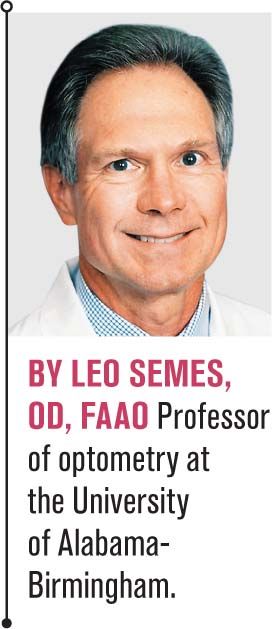The case of the disappearing drusen
At her periodic eye examination, a female patient in her early 70s was discovered to have low-risk macular degeneration in each eye. Further evaluation revealed that her visual acuity (VA) was correctable to 20/25 in each eye.

At her periodic eye examination, a female patient in her early 70s was discovered to have low-risk macular degeneration in each eye. Further evaluation revealed that her visual acuity (VA) was correctable to 20/25 in each eye. Her medical history was remarkable for systemic hypertension treatment she received for at least 10 years.
The patient was neurologically intact, had intraocular pressures (IOP) in the statistically normal range, anterior segments were unremarkable for her age, and she had age-appropriate lens changes.
Except for the refractive correction (low-degree hyperopic astigmatism, presbyopia) and fundus findings, the remaining ocular history and findings were noncontributory.
At baseline, the drusen presentation was minimal, and the patient was asked to self-monitor for vision changes and return in one year (Figure 1).
Follow-up and treatment
One year later, at the follow-up examination, the right eye showed some minimal advancement of drusen in the macula. However, he left eye had developed wet age-related macular degeneration (AMD), and VA had deteriorated to 20/200 (Figure 2). The patient claimed to be unaware of the visual deficit.
The patient was sent for consultation with a retina specialist who administered an anti-VEGF agent in each eye based on a fluorescein angiography (FA) study.
As expected, the clinical picture in the left eye was not altered, nor was VA. Strikingly, at our follow-up visit which took place two years from the baseline fundus photograph of the right eye, the drusen landscape showed significant improvement (Figure 3).
On follow-up over the next four years, the clinical picture in the right eye had deteriorated to the point of requiring repeated anti-VEGF injections. The VA in the left eye has remained stable (20/200), but the VA of the right eye had slowly declined to 20/60 despite repeated anti-VEGF treatments.
Lasers assist in treatment
Drusen disappearance had been documented in an earlier clinical trial of laser treatment.1
This classic investigation from nearly two decades ago found that approximately half of eyes treated showed abatement of clinical findings. In terms of specification (physical appearance in this case), the trial was successful.
Unfortunately, there was no demonstrable improvement in visual performance (acuity). More recently, drusen regression as measured by fundus autofluorescence (FAF) has been reported. Drusen regression was documented over a two-year period without any intervention.2
The authors speculated that the phenomenon may be associated with physiological changes in the outer retina but offered no further explanation.
A consolidated review of clinical trials concerning laser treatment for drusen was unable to demonstrate efficacy to prevent conversion to neovascular AMD, progression to geographic atrophy, or visual acuity loss.3 Trials are ongoing to evaluate the efficacy of anti-VEGF treatment for drusen.
References:
1. Figueroa MS, Regueras A, Bertrand J, Aparicio MJ, Manrique MG. Laser photocoagulation for macular soft drusen. Updated results. Retina. 1997;17(5):378-84.
2. Toy BC, Krishnadev N, Indaram M, Cunningham D, Cukras CA, Chew EY, Wong WT. Drusen regression is associated with local changes in fundus autofluorescence in intermediate age-related macular degeneration. Am J Ophthalmol. 2013 Sep;156(3):532-42.e1.
3. Virgili G, Michelessi M, Parodi MB, Bacherini D, Evans JR. Laser treatment of drusen to prevent progression to advanced age-related macular degeneration. Cochrane Database Syst Rev. 2015 Oct 23;(10):CD006537.